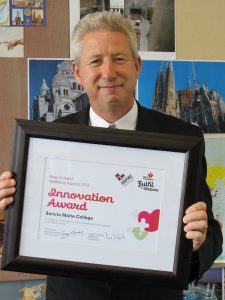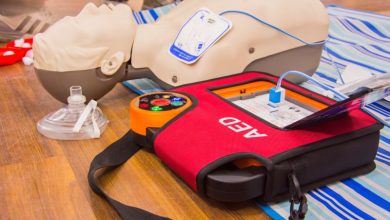Teacher wellbeing: a cost or an investment?

Teaching is a great profession of talented, skilled, innovative, curious, industrious and fun people. If we want them to deliver a high quality service to our young people for years to come, then we must invest in their wellbeing and wellness. It is not a cost but an investment in delivering excellence in New Zealand schools.
Congratulations to the many educational institutions nationwide that now have a teacher wellbeing program running. When I started talking about this concept in 2011, there were only a very few schools around that had practical programs in place to care for the wellbeing and wellness of teachers. Five years on, and thanks to the positive and growth mindset of many principals, senior leaders, teachers, guidance counsellors and boards of trustees’ members, programs have popped up in all sectors of education.
The Ministry of Education’s new guidelines to comply with the updated Health and Safety Act, suggest that a staff wellbeing program is considered a must for all schools, through key component nine, one of the 12 components advocated for a robust and effective health and safety system in our institutions.
Thank goodness that in 2016, teachers and senior leaders fully understand the daily workload demands and intensity of life in 21st century schools, and the need for some practical wellbeing support to guide them through the year. The introduction of a teacher wellbeing program is no longer seen as a ‘cost’ but as an investment in all of the staff at a place of work. The education sector has arrived very belatedly to align ourselves with what is now the norm in the vast numbers of businesses, industry, and workplaces small and large. The benefits of workplace wellness programs are extremely well researched and such an investment in the workers has many documented positive benefits including reduced sickness rates, increased productivity, a happy workplace and reduced staff turnover; it’s a win-win for everyone.
Our teacher wellbeing program at Sancta Maria College was acknowledged in 2013 at the national workplace wellness awards sponsored by the Heart Foundation and HAPINZ. At the Wellington ceremony, attended by the majority of the well-known industry and businesses in New Zealand, alongside numerous lesser known small and large organisations, a panel of eminent judges recognised the value of our school’s wellbeing program. We scooped the Innovation Award – one of the four major awards at this prestigious annual event. After the event, CEOs and leaders from many organisations congratulated the school on a wonderful program to support all staff at the college. It was truly humbling to be in the presence of some terrific companies that are well known for investing in their people and who deliver such wonderful wellbeing support during the hours of work.
So what was the response from the educational sector? Let me tactfully say, disappointing. The usual comments were wheeled out: teachers don’t need this, teaching has generous holidays unlike other professions, it is not our job to look after a teacher’s wellbeing, and this a cost that we don’t need. One principal, in very direct language, confirmed his hardline approach: “I work a teacher hard for ten years then, when they are burnt out, I move them on and bring in a younger model and go again”. I was speechless.
As a sector, we haven’t got a great track record in investing in our highly professional and skilled workforce. For example, from the late 90s through to 2007, NZCER conducted three nationwide research surveys into principal workload, stress and burnout. Each report summary raised increasingly alarming results and suggested immediate actions, yet the key players and ministry did next to nothing to support the nation’s principals. Much of the early stonewalling came from people with a fixed mindset with knowledge and understanding of only 20th century schools and with very little or no experience of working in today’s schools.
Thankfully, much of the higher echelons of the educational sector are now being replenished with skilled ex-practitioners or well researched academics who fully understand what it is like to be a teacher in a 2016 school. I am currently aware of much work behind the scenes at the ministry and by the various teacher and principal union executives on providing wellbeing resources for all in the sector and I applaud them for their work, initiative and innovation.

What started out as a few people and a few schools doing small things to support colleagues in their schools, has now turned into a sector wide flood of ideas, programs and resources. It is wonderful to see and I look forward to seeing what others produce in the years to come and in turn, incorporating much of the best practice into our teacher wellbeing program at Sancta Maria College. Such a wellbeing and wellness program should be embedded in the ethos of every school, should be a live document that is regularly reviewed and tweaked for years to come.
It has been an absolute pleasure to write wellbeing articles for ‘School News’ for the past few years and now is a good time to pass the baton to others, to take teacher wellbeing to the next level. As always, a final plug for the ‘Good New Habits Book’ and if you would like a free electronic copy of the 2016 teacher wellbeing resources which you can rejig for 2017, then please send me a note to [email protected]
Best wishes for a great term four – and safe and happy holidays.








